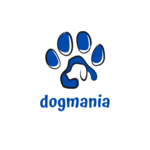Transitioning your dog to a grain-free diet can offer numerous health benefits, such as improved digestion, enhanced skin and coat health, and increased energy levels. However, making this change requires careful planning and consideration to ensure a smooth and successful transition. In this comprehensive guide, we'll cover everything you need to know to transition your dog to a grain-free diet effectively and safely.
Understanding the Need for a Grain-Free Diet
Before embarking on the transition, it’s essential to understand why a grain-free diet might be beneficial for your dog. Grain-free diets eliminate common grains such as wheat, corn, and rice, replacing them with alternative carbohydrates like sweet potatoes, peas, or lentils. This can be particularly helpful for dogs with grain allergies, sensitivities, or digestive issues. Additionally, grain-free diets often contain higher levels of protein and fewer fillers, which can contribute to overall better health.
Steps to Transition Your Dog to a Grain-Free Diet
1. Consult Your Veterinarian
The first and most crucial step is to consult with your veterinarian. They can provide personalized advice based on your dog's age, breed, health status, and specific dietary needs. Your vet can help you determine if a grain-free diet is appropriate and guide you on how to make the transition safely.
2. Choose the Right Grain-Free Dog Food
Selecting high-quality grain-free dog food is vital for a successful transition. Look for products where the main ingredients are high-quality proteins, such as chicken, beef, or fish. Avoid foods with excessive fillers, artificial preservatives, or by-products. Research different brands, read reviews, and check for certifications that ensure quality and safety.
3. Plan the Transition Period
Transitioning your dog to a new diet should be done gradually over 7 to 10 days to avoid gastrointestinal upset. Here’s a simple schedule to follow:
- Days 1-3: Mix 25% grain-free food with 75% of your dog's current food.
- Days 4-6: Increase to 50% grain-free food and 50% current food.
- Days 7-9: Mix 75% grain-free food with 25% current food.
- Day 10: Feed 100% grain-free food.
4. Monitor Your Dog's Response
Throughout the transition period, closely monitor your dog's reaction to the new diet. Watch for signs of digestive issues such as vomiting, diarrhea, or constipation. Additionally, observe your dog's energy levels, coat condition, and overall behavior. Positive changes, such as increased energy or improved coat shine, indicate that the transition is going well.
5. Adjust Portions as Needed
Grain-free dog foods can be more nutrient-dense than traditional options, which might require adjusting portion sizes. Follow the feeding guidelines on the food packaging, but also consider your dog's activity level and weight. Consult your vet if you're unsure about the appropriate portion size.
Tips for a Smooth Transition
1. Maintain Consistency
Consistency is key during the transition period. Stick to the feeding schedule and avoid giving your dog additional treats or table scraps that could interfere with the adjustment process.
2. Provide Plenty of Fresh Water
Ensure your dog has access to fresh water at all times. Proper hydration is essential, especially when transitioning to a new diet.
3. Be Patient
Every dog is different, and some may take longer to adjust to a new diet than others. Be patient and give your dog time to adapt. If you notice persistent issues, consult your veterinarian for advice.
4. Gradual Introduction of New Treats
If you also plan to switch to grain-free treats, introduce them gradually. Start with small amounts and monitor your dog's reaction to ensure they tolerate the new treats well.
5. Keep a Food Diary
Keeping a food diary can help you track your dog's progress during the transition. Note any changes in behavior, digestion, or coat condition. This can be valuable information for your vet if any issues arise.
Potential Challenges and How to Overcome Them
Some dogs may experience mild digestive upset during the transition. If this occurs, slow down the transition process by mixing smaller amounts of grain-free food with the current diet for a few more days before increasing the ratio.
If your dog is a picky eater, it might resist the new food. Try adding a small amount of low-sodium chicken broth or mixing in a bit of wet grain-free food to make the dry food more appealing.
While grain-free diets can help with allergies, some dogs might be allergic to other ingredients in the new food. If you notice signs of an allergic reaction, such as itching, swelling, or difficulty breathing, discontinue the new food and consult your vet immediately.
conclusion
Transitioning your dog to a grain-free diet can be a positive step towards enhancing their overall health and well-being. By consulting with your veterinarian, choosing high-quality grain-free food, and following a gradual transition plan, you can ensure a smooth and successful switch. Keep a close eye on your dog's response and be prepared to make adjustments as needed. With patience and careful monitoring, your dog can enjoy the benefits of a grain-free diet and lead a healthier, happier life.



leave me your thoughts here